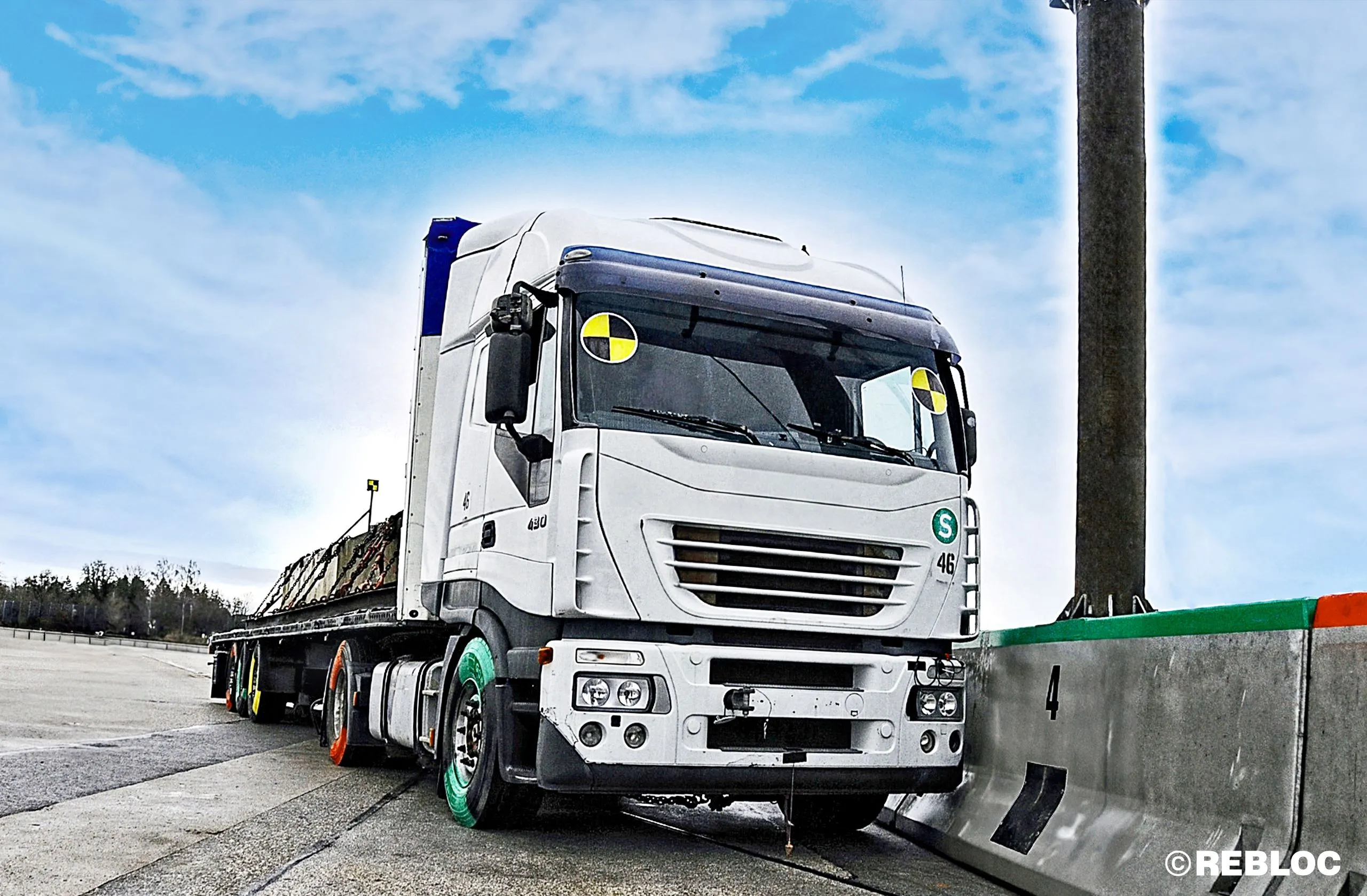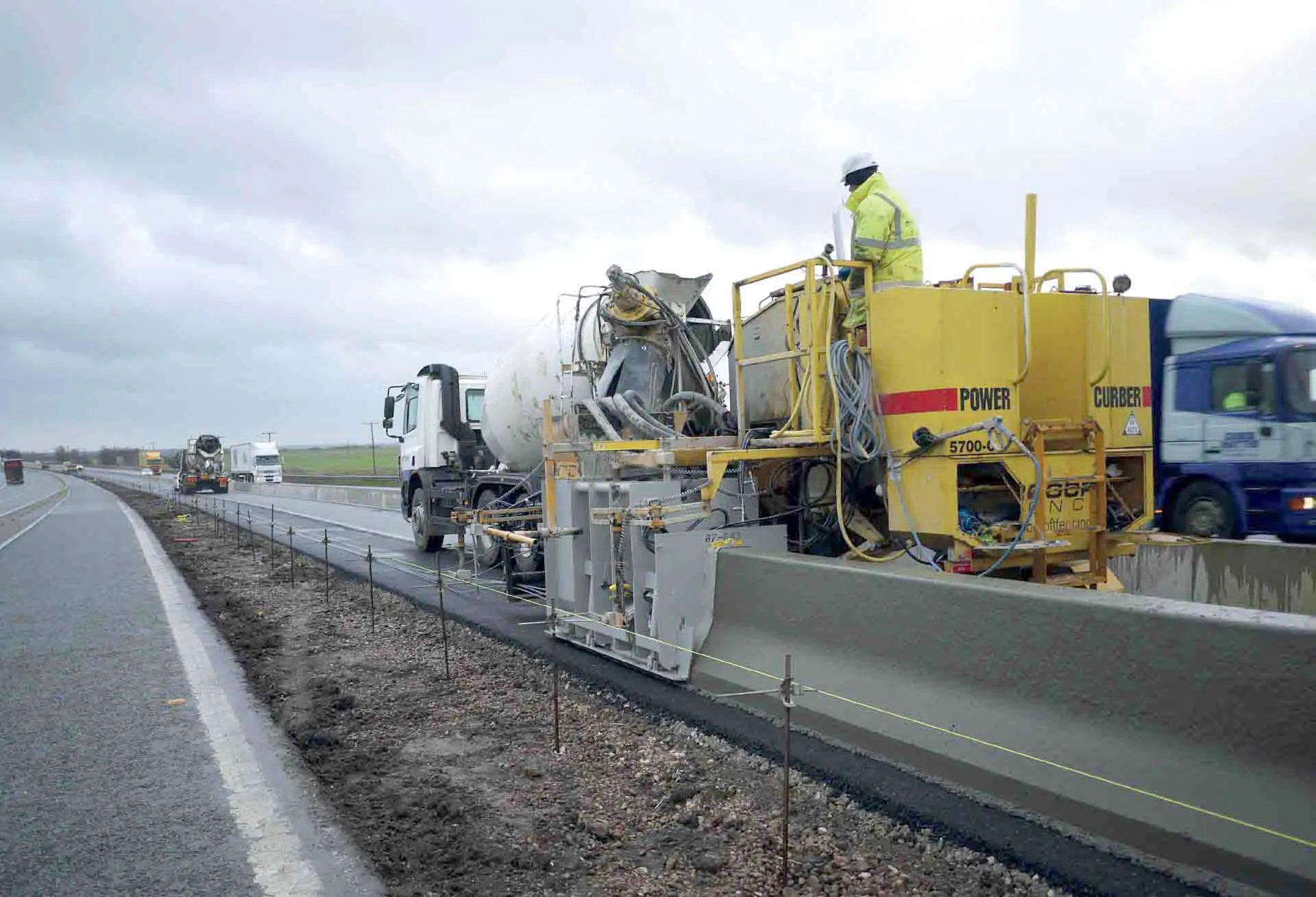
REBLOC reports that it has unveiled the world's first H4b-tested highway gantry system, a pioneering breakthrough in road safety.
The company says that its new system revolutionises the conventional approach of a cast-in-place foundation that includes the base pole and safety barriers on both sides.
REBLOC’s integrated system provides a double-sided H4b safety barrier that acts as foundation for the base pole of the gantry system. Rigorous H4b testing of the complete system has shown exceptional stability, making it ideal for central reservations to ensure superior safety.
The system comprises three precast concrete barriers. The two outer barriers flank the central barrier housing the integrated foundation and base pole. EN-1317 compliant testing ensures reliability upon vehicle impact.
Additional installations including light poles or traffic signs can be easily incorporated on top of the certified system. The precast concrete elements are securely anchored to an embedding depth of only 200mm. An inspection access simplifies electric cabling. All three elements are firmly connected using steel plates on top of the barriers.
REBLOC says that the system's no-deflection performance in H4b testing means that it is suitable for central reservation use on highways with high speed limits. But there are many other key features, such as the design itself – it optimises space and aesthetics as well as eliminates the need for separate structures.
As well, the slim profile - less than 1m wide at its widest point - means it excels in congested areas where there is heavy traffic but little land for traditional gantry systems.








